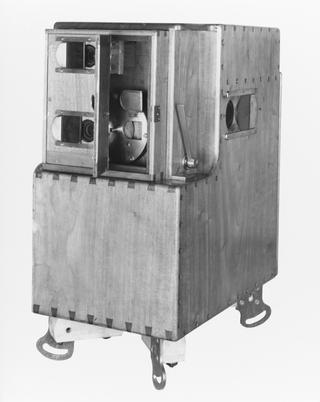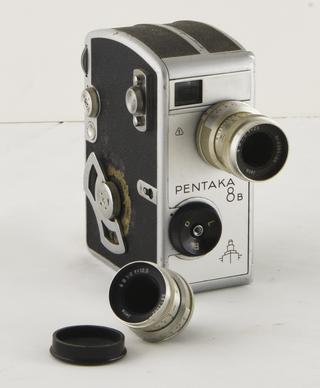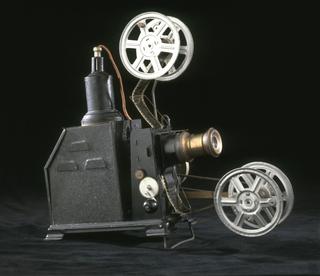
Cylinder phonograph mechanism for Edison Kinetophone
- maker:
- Thomas Alva Edison and William Kennedy Laurie Dickson
Cylinder phonograph mechanism from Edison Kinetophone (or Phonokinetoscope). Serial no K1268. Painted inscription in gold 'FOR USE ONLY IN CONNECTION / WITH THE EDISON KINETOSCOPE'.
Invented by Thomas Alva Edison's Scottish employee, William Dickson (1860-1935), the Kinetoscope was the first device to show motion pictures. Looking through the eyepiece at the top of the machine, the viewer saw about 20 seconds of film, which passed through in a continuous loop. Kinetoscope parlours offering a choice of films first opened in New York on 14 April 1894 and in London on 18 October 1894. However, they did not survive the introduction of cinema by the Lumiere brothers in Paris a year later. The 'Edison' Phonokinetoscope, also called Kinetoscope with cylinder phonograph was an early attempt at creating a sound-film system.
Details
- Category:
- Cinematography
- Object Number:
- 1930-486/3
- Materials:
- steel (metal), metal (unknown), aluminium alloy and wood (unidentified)
- Measurements:
-
overall: 120 mm x 345 mm x 170 mm,
- type:
- kinetophone and component - object
- credit:
- The National Media Museum, Bradford




